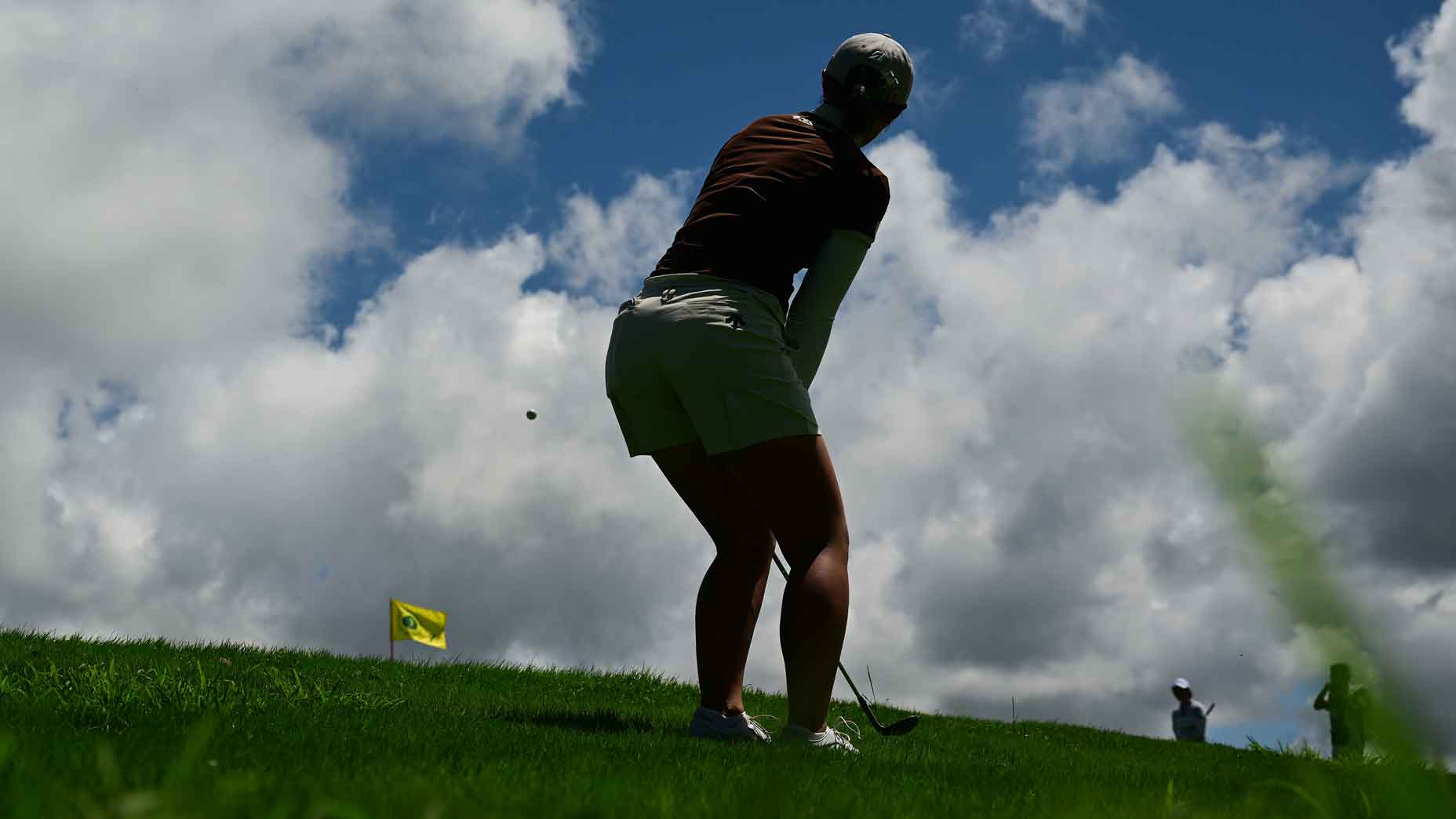
Stop struggling with your chip shots around the green once and for all!
Getty Images
When players are trying to shave strokes off of their scorecard, one of the quickest ways to see improvement is by mastering their chipping around the greens.
To help you accomplish that, I share 10 important steps below, which will provide you with better fundamentals and an understanding of what you need to do to become the ultimate chipper.
Being a good chipper is a great way to lower your scores quickly, as it takes pressure off both your approach shots as well as putting.
I often say, “once you get chipping, you get chipping.” So to understand how to do it correctly — which should quickly reflect in your scores — take a look below at my 10 most important steps.
1. Defining what a chip is
Golf terminology can be confusing at times, so many players probably don’t know the difference between a chip and pitch.
In my definition, a chip is a short-game stroke where the ball rolls equal to or greater than the distance that it carries.
For instance, the stroke will look much like a putting stroke, with an even backswing and follow through.
Since the chipping stroke is more like a putt, it should never get overly large. I prefer to see the stroke size somewhere around knee-to-knee, being well below hip level. A stroke that gets too large can cause larger misses — especially when you don’t make contact with the turf.
2. Setup
A basic chipping setup would include the following:
Gripping down on the handle.
A narrow stance (about one clubhead width).
The ball position being center to slightly back (I prefer the center).
A slight lean of the upper body towards the target.
3. Proper posture
I find it much easier for my students to find success chipping when they use the same posture as they would have in the full swing — but with a smaller setup.
In other words, I like to see a proper bend forward from the hips, which allows the hands to hang directly below the shoulders. Golfers who get too crowded or squatty often hit fat shots or catch the heel of the club — neither of which are very fun.
Also remember to keep a bit of space between your hands and thighs. If you crowd this area, contact is typically less consistent.
Finally, even when you grip down on your club, you should still be bent forward from the hips; just step in a bit closer to maintain posture and balance.
4. Insurance
It’s difficult to hit your short game shots perfectly every time, which is why I want you to build in some insurance into your setup.
When chipping, always be sure to have the bottom of the arc occur after the ball, with your upper body starting, staying, and finishing with it either forward or on the target side of the ball.
The club will hit the ground where your head is located, so when you setup well and lean your head and sternum forward, you move the bottom of your arc on the target side of the ball — assuming your ball position is properly centered.
I don’t suggest putting the ball position too far back, as this can cause too much shaft lean, leading the club to dig.
5. Hit the ground
Sure, the ball is going to roll a lot when you’re chipping, but you still must remember to hit the ground with the club as you swing.
Since you may be using a sharper-edged club on longer chips (like a pitching wedge or a 9-iron), when the club hits the ground, it may dig a bit. This is totally fine, so long as your upper body is correctly forward of the ball.
A good drill to try in order to practice hitting the ground is the following: Place a tee on the ground on the target side of the ball, and get very good at your clubhead brushing the grass after the ball.
6. Try this three-stroke drill for continuous rhythm
Continuous rhythm is really helpful with contact and distance control — especially when you’re chipping.
Due to the smaller stroke motion when chipping, it’s very important that the club stays in motion, which will help make consistent contact and reliable speed for distance control.
One of my favorite ways to practice continuous motion is with this three-stroke drill.
Get a good setup, making sure your weight stays forward. Next, swing your arms and your club back and through without stopping.
You’ll need to be continuous in your motion to be efficient, and this is so important when determining your best rhythm.
7. Calibration
Once you can determine your most comfortable stroke size, you can easily calibrate what club you need from different chipping distances.
Taking the same back and through stroke size, try using all of your irons to determine how far the ball travels — including the roll, which will help you better understand your own yardage chart for chipping.
8. Heel up drill
To help ensure that the low point of your stroke occurs after hitting your golf ball, you need to have both your sternum and head on the target side before, during, and after your swing.
A great way to practice this is by stroking chips with your back heel off the ground, helping you get the right feel.
By keeping your heel up, it will help keep your low point in the correct location, while reminding you to never fall back to try and lift the ball.
9. Practice contact first, then focus on distance control
Remember, perfect practice makes perfect. So whether you’re chipping or hitting another type of shot, you want to be specific in your practice order.
Get very good with contact first, and once you have that down, you can transition to honing in your distance control.
Becoming a good chipper takes patience, so don’t get frustrated if you’re not immediately able to stick shots close — even if you feel like you’re doing everything right in your setup.
10. Low maintenance — thin shots should still work
Since the chipping stroke is a smaller motion, the misses should still be quite playable.
Unlike a mishit with your driver — which can cause the ball to hook or slice — because your stroke is smaller while chipping and you’re closer to the green, the result can still leave you with a decent next shot.
So even if you skull the ball while chipping, it might not look pretty, but it should still produce a good result; so long as you’re limiting your stroke size.
All of our market picks are independently selected and curated by the editorial team.
If you buy a linked product,
GOLF.COM may earn a fee. Pricing may vary.








